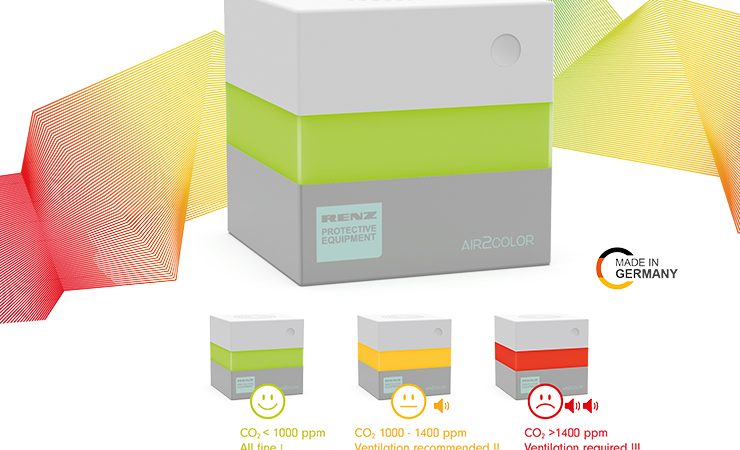Renz has launched AIR2COLOR, a carbon dioxide traffic light system that evaluates air quality in a room to ensure healthy and safe work spaces.
Renz is a specialist in document presentation technologies, including punching and binding, thermal binding, personalised binding covers, UV and spot coating, and any types of print finishing. The company’s product portfolio has now been extended to include a full range of PPE, from face masks and shields, to disinfectant dispensers and plasma air cleaners.
Renz has introduced AIR2COLOR to help businesses and other organisations ensure healthy and safe indoor spaces by means of ventilation.
In the fight to ward off coronavirus, myriad steps have been introduced by governments, businesses and individuals to limit the risk of exposure to the virus. From social distancing and stay-at-home orders, to greater use of PPE in wider society, each have been implemented to try and bring the spread of Covid-19 under control.
In Germany, regularly ventilating rooms has been added to the country’s government’s formula to tackle the pandemic. In October, German chancellor Angela Merkel extended her government’s guidelines to include ventilation, stating that ‘ventilating rooms may be one of the cheapest and most effective ways’ of containing the spread of the virus.
The UK’s Department of Health & Social Care is now actively encouraging ventilation to help reduce the spread of Covid-19. An information video released by the government department shows how virus particles linger in enclosed spaces. It also shows how letting fresh air in can reduce the risk of infection by more than 70%. Watch the video here.
On the back of this, Renz has launched AIR2COLOR to evaluate air quality in a room based on carbon dioxide concentration and to encourage regular ventilation.
At the heart of the Renz AIR2COLOR is a high-quality NDIR carbon dioxide sensor, which is self-calibrating and maintenance free. The light band running around the unit is visible from all four sides and shows the quality of air in a room, either green (no ventilation required), yellow (ventilation recommended) or red (ventilation required).
This is said to encourage active, effective and regular ventilation, with too much carbon dioxide in indoor air known to affect concentration levels, physical well-being and health. Demand-oriented ventilation also reduces aerosol concentration in the air and has a positive effect on energy costs. Aerosols contribute to the spread of coronavirus, which when coupled with the high-level of Covid-19 transmissions taking place in indoor settings, makes ventilation a potentially important tool in minimising the risk of infection, according to Renz.


